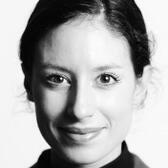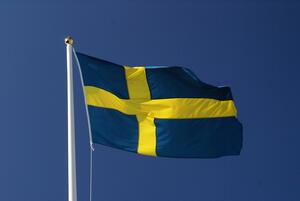Understanding the Jews of Sweden
In classroom H135b, Ingrid, Filippa, Linnea, and Fanny are sitting at wooden desks that are pushed together to shape a large table that faces the white board and the lecturing Professor Schwarz. These women, most retired, all Swedish, and all non-Jews, are learning Yiddish. In fact, they are not just learning Yiddish—as they all have passed that elementary sounding term years ago—but rather performing complex analysis of Yiddish literature in the post 1945 European context. Ingrid, a rotund, short woman with a smoker’s voice, once had a Jewish boyfriend many years ago that first got her interested in Jewish studies and Yiddish. Filippa, the oldest in the class (approximately 80), traveled to Israel in the 1970s and has harbored a love for Jewish culture ever since. Linnea, a young but serious girl who is very open about her struggle with depression, had a Jewish grandfather that converted to Christianity and went on missions to help Jews find Jesus. Lastly, Fanny is a retired theatre director interested in media studies and has some distant Jewish family members.
Yiddish, to many people’s surprise, is an official minority language of Sweden. So who exactly is taking cultural ownership for Yiddish? Is it the non-Jews that are actively engaging with the language, or is it the Jews that are responsible for the roots of the language? I am struggling to understand the multiplicity hidden in these questions during my year as a Fulbright scholar at Lund University in Sweden. Here is what I have found so far.
My interviews have taken place throughout Sweden and suggest that the Swedish Jewish community is divided in recognizing the role Yiddish plays in their lives. Those who have parents who arrived in Sweden after World War II, escaping ruined lives in Poland, Latvia, Lithuania, Germany and other countries, have close connections with Yiddish. They view Yiddish as an inherently Jewish language, important to Jewish culture, and perhaps most importantly a household language that they grew up with. The Swedish Jews who don’t really engage with Yiddish on many levels are less positive about the “multicultural” policy Sweden has decided to pursue. Upon hearing Yiddish deemed as a national minority language, many Swedes react with words like “ridiculous,” “laughable,” “desperate,” and “strange.”
There seems to be an atmosphere of confusion within the Swedish Jewish society as to 1) how the policy was passed, 2) how the Swedish federal grants are distributed, and 3) how future generations will uphold this policy. We will look at these topics in turn now.
1) how the policy was passed: Those who are active in the Yiddish pockets throughout Sweden (which sprung up after the influx of Jewish refugees to the country after WWII) can identify one or two leaders as responsible for pushing the Swedish government to declare Yiddish as a national minority language. Yet, the Swedish-Jews on the outskirts of this Yiddish culture don't really know why the policy came about: what actions were taken or which actors were responsible.
2) how the Swedish federal grants are distributed Nevertheless, one issue most people have an opinion on—and is perhaps the most politicized factor—is the way the funds are distributed. For English speakers and for those who are curious about how much money is truly being given to grants for Yiddish and Jewish culture, it is very difficult to find transparent information on the exact breakdown. Moreover, members of the Jewish community don't quite understand what goes into making a grant application, how Yiddish should be incorporated, and what amount of money they can ask for. There is mounting pressure concerning funding as Swedish-Jewish synagogue memberships decline throughout the country.
3) how future generations will uphold this policy All Swedish-Jews interviewed, no matter what their connection to Yiddish was, did not actively teach Yiddish to their kids in the home. The truth of the matter is that there are close to no homes in Sweden today that use Yiddish as their mother tongue. Scholars say that this statistic demonstrates that Yiddish is a post-vernacular language—a language that is no longer a practically used form of daily communication. Indeed, when the interviewees were asked if they would be open to teaching Yiddish to their children, most of them were reluctant.
The brief canvass of Sweden’s Jews detailed above is important as it reminds us that nations’ ethnic identity are constantly changing in today’s globalized world where immigration, migration, and self-determination are powerful forces. Studying minorities reminds us of the inherent tension in our lives between our competing desires for freedom and belonging. Minorities have the unique ability to feel this sentiment in its entirety and truly know what it is like to be integrated yet marginalized, to feel different yet included. It is this balance that we as global citizens in the new generation need to pursue: a balance where minority traditions and ideas are appreciated, respected, and included in the public sphere.
In studying attitudes toward Yiddish in Sweden, I’ve learned the importance of aiming for inclusion and getting to know the customs and cultures of our neighbors. Yiddish fluency might be waning, but Ingrid, Filippa, Linnea, and Fanny are learning that Jewish culture and tradition are still strong; building upon the past, thriving in the present, and seeking a great future.








Hi,
My name is Susanne Sznajderman-Rytz and I am happy to read this articel 15 years after I managed to convince the Swedish Prime Minister to include and announce Yiddish a national minority language. As a child born by survivors who arrived to Sweden, growing up in a Yiddish speaking environment, I challenged the Swedish guvernement. I am a linguist by profession and have by now spent more than 25 years showing the strength and beauty of Yiddish culture, tradition and language. Surprisingly the opponents were "modern" Jews, trying to hide this part of our common heritage.